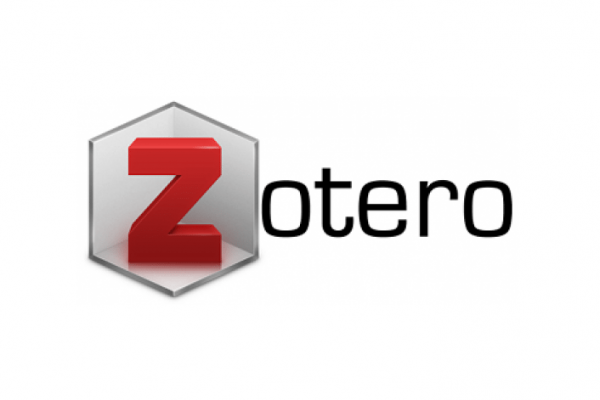An Analysis on The Principles of Arabic Textbooks for Madrasah Aliyah in Indonesia: Based on The Ministry of Education and Rusydi Ahmad Thuaimah
Abstract
Keywords
Full Text:
PDFArticle Metrics
Abstract view : 334 times | PDF view : 275 timesReferences
Abidin, J. (2017). Rancangan Strategi Pembelajaran. Al-Fikra : Jurnal Ilmiah Keislaman, 12(1), 70. https://doi.org/10.24014/af.v12i1.3863
Abidin, Y. (2014). Desain Sistem Pembelajaran Dalam Konteks Kurikulum 2013 (Bandung). PT. Refika Aditama.
Al-qatawneh, S. S., Rajeh, N., Elmagzoub, M., & Ahmed, O. (2021). Heliyon The representation of multiple intelligences in an intermediate Arabic-language textbook and teachers ' awareness of them in Jordanian schools. Heliyon, 7(April), e07004. https://doi.org/10.1016/j.heliyon.2021.e07004
Arsanti, M. (2018). Pengembangan Bahan Ajar Mata Kuliah Penulisan Kreatif Bermuatan Nilai-Nilai Pendidikan Karakter Religius Bagi Mahasiswa Prodi Pbsi, Fkip, Unissula. KREDO : Jurnal Ilmiah Bahasa Dan Sastra, 1(2), 71–90. https://doi.org/10.24176/kredo.v1i2.2107
Arsanti Meilan. (2014). Pemrolehan Bahasa Pada Anak (Psikolinguistik). Pbsi, 3(2), 24–47. https://prosiding.unma.ac.id/index.php/semnasfkip/article/view/293
Bahruddin, U. (2017). Rekontruksi Pengembangan Pendidikan Bahasa Arab (A. Muhammady (ed.); 1st ed.). CV Lisan Arabi.
Faoziyah, L., & Izzah, N. (2021). Analysis of Arabic Language Textbooks for Madrasah Aliyah Class XI Based on the 2013 Curriculum | Analisis Buku Ajar Bahasa Arab Madrasah Aliyah Kelas XI Berdasarkan Kurikulum 2013. Mantiqu Tayr: Journal of Arabic Language, 1(2), 117–132. https://doi.org/10.25217/mantiqutayr.v1i2.1480
Hadi, N. (2018). Analisis Isi Buku Ajar Bahasa Arab (Pendekatan Saintifik Kurikulum 2013) Kelas I Madrasah Ibtidaiyah Terbitan Kementerian Agama Republik Indonesia 2014. Ijaz Arabi Journal of Arabic Learning, 1(1), 37–51. https://doi.org/10.18860/ijazarabi.v1i1.4930
Hall, C. M., & Valentin, A. (2008). Content analysis. Paediatric Nursing, 20(6), 38. https://doi.org/10.7748/paed.20.6.38.s27
Hanifah, U. (2014). Pentingnya buku Ajar yang berkualitas dalam meningkatkan efektivitas pembelajaran bahasa Arab. At-Tajdid :Jurnal Ilmu Tarbiyah, 3(1), 99–121. http://portalgaruda.fti.unissula.ac.id/index.php?ref=browse&mod=viewarticle&article=437962
Krippendorff, K. (2018). Content Analysis An Introduction to Its Methodology. SAGE Publications.
Lewicka, M., & Waszau, A. (2017). Analysis of Textbooks for Teaching Arabic as a Foreign Language in terms of the Cultural Curriculum. Universal Journal of Educational Research, 5(1), 36–44. https://doi.org/10.13189/ujer.2017.050105
Machmudah, U. (2018). Model Bahan Ajar Bahasa Arab Sekolah Dasar Islam di Kota Malang (principle Analysis dalam buku Takallum bil ’Arobiyah). An-Nabighoh, 20(02), 203–221. https://doi.org/10.32332/an-nabighoh.v20i02.1284
Magdalena, I., Sundari, T., Nurkamilah, S., Nasrullah, & Amalia, D. A. (2020). Analisis Bahan Ajar. Nusantara : Jurnal Pendidikan Dan Ilmu Sosial, 2(2), 311–326. https://doi.org/10.36088/nusantara.v2i2.828
Mulhendra. (2022). Analisis Buku Ajar Bahasa Arab untuk MI / SD Islam Pustaka Imam Syafi ’ i Menurut Kriteria Rusydi Ahmad Thu ’ aimah. Jurnal Tashfiyatuna, 01(01), 56–70. https://tashfiyatuna.stithidayatunnajah.ac.id/index.php/tashfiyatuna/article/view/Artikel_06
Qodriyah, L. (2019). Kelayakan Bahan Ajr pad Rancangan Pelaksanaan Bahasa Indonesia Kurikulum 2013 yang Disusun oleh Pendidik SMA Kelas XI di Kabupaten Demak. Thesis. Indonesian Language and Literature Education, Faculty of Language and Arts, Semarang State University. Semarang.
Ramah, S., & Rohman, M. (2018). Analisis Buku Ajar Bahasa Arab Madrasah Aliyah Kurikulum 2013. Arabiyatuna : Jurnal Bahasa Arab, 2(2), 141. https://doi.org/10.29240/jba.v2i2.552
Ritonga, A. W. (2021). Analysis of Arabic Textbook “Takallam bil 'Arabiyyah Volume 6” Based on Mickey’s Theory. Tanwir Arabiyyah: Arabic as Foreign Language Journal, 1(1), 25–32. https://doi.org/https://doi.org/10.22219/afl.ylil.2534
Romansyah, K. (2016). Pedoman Pemilihan dan Penyajian Bahan Ajar Mata Pelajaran Bahasa dan Sastra Indonesia. Jurnal LOGIKA, XVII(2), 59–66. https://jurnal.ugj.ac.id/index.php/logika/article/view/145
Royani, A., Nawawi, M., & Maswani, M. (2020). Evaluation of Arabic Language Textbooks At Uin Syarif Hidayatullah Jakarta. Abjadia, 5(1), 29. https://doi.org/10.18860/abj.v5i1.8495
Saepuddin, M. P. (2012). Pembelajaran keterampilan berbahasa Teori dan Aplikasi. In Muchlasin (Ed.), Pembelajaran Keterampilan Berbahasa Arab (1st ed.). Trust Media Publishing.
Setyawan, C. E., Basit, L. A., & Fathoni, M. (2018). Telaah Bahan Ajar Bahasa Arab “Ayo Fasih Berbahasa Arab” Madrasah Aliyah Kelas XII Karya Hasan Saefullah (Tinjauan Materi Berdasarkan Teori Mackey). Prosiding Konferensi Nasional Bahasa Arab IV, 1–10. http://prosiding.arab-um.com/index.php/konasbara/article/view/273
Sholeh, N., & Nuha, U. (2013). Pengembangan Kurikulum Bahasa Arab (M. S. Al-Maslul (ed.); Cetakan 1). Diva Press.
Thuaimah, Rusydi Ahmad; Naqah, K. M. (2009). ????? ??????? ???????? ??????? (??????? ????????) (?????? ???). ??? ??????? ????? ???????? ????????.
DOI: https://doi.org/10.23971/altarib.v10i2.4449
Article Metrics
Abstract view : 334 timesPDF - 275 times
Refbacks
- There are currently no refbacks.
Copyright (c) 2022 Asbarin, Umi Machmudah, Nabila Nailil Amalia, Moch Taufik

This work is licensed under a Creative Commons Attribution-ShareAlike 4.0 International License.
Indexed By:
Tool:




Al-Ta'rib : Jurnal Ilmiah Program Studi Pendidikan Bahasa Arab IAIN Palangka Raya is published by Arabic Education Departement (PBA), the Faculty of Education and Teacher Training (FTIK),� State Islamic Institut (IAIN) of Palangka Raya in partnership with IMLA (Association of Arabic Lecturers).
Editor and Administration Address:
Arabic Education Departement (PBA), the Faculty of Education and Teacher Training (FTIK),� State Islamic Institut (IAIN) of Palangka Raya, Jalan G. Obos Komplek Islamic Centre Palangka Raya, Kalimantan Tengah, Indonesia, Postal Code 73111.Email: [email protected]/[email protected], Website: http://e-journal.iain-palangkaraya.ac.id/index.php/tarib
This work is licensed under a Creative Commons Attribution-ShareAlike 4.0 International License.



















